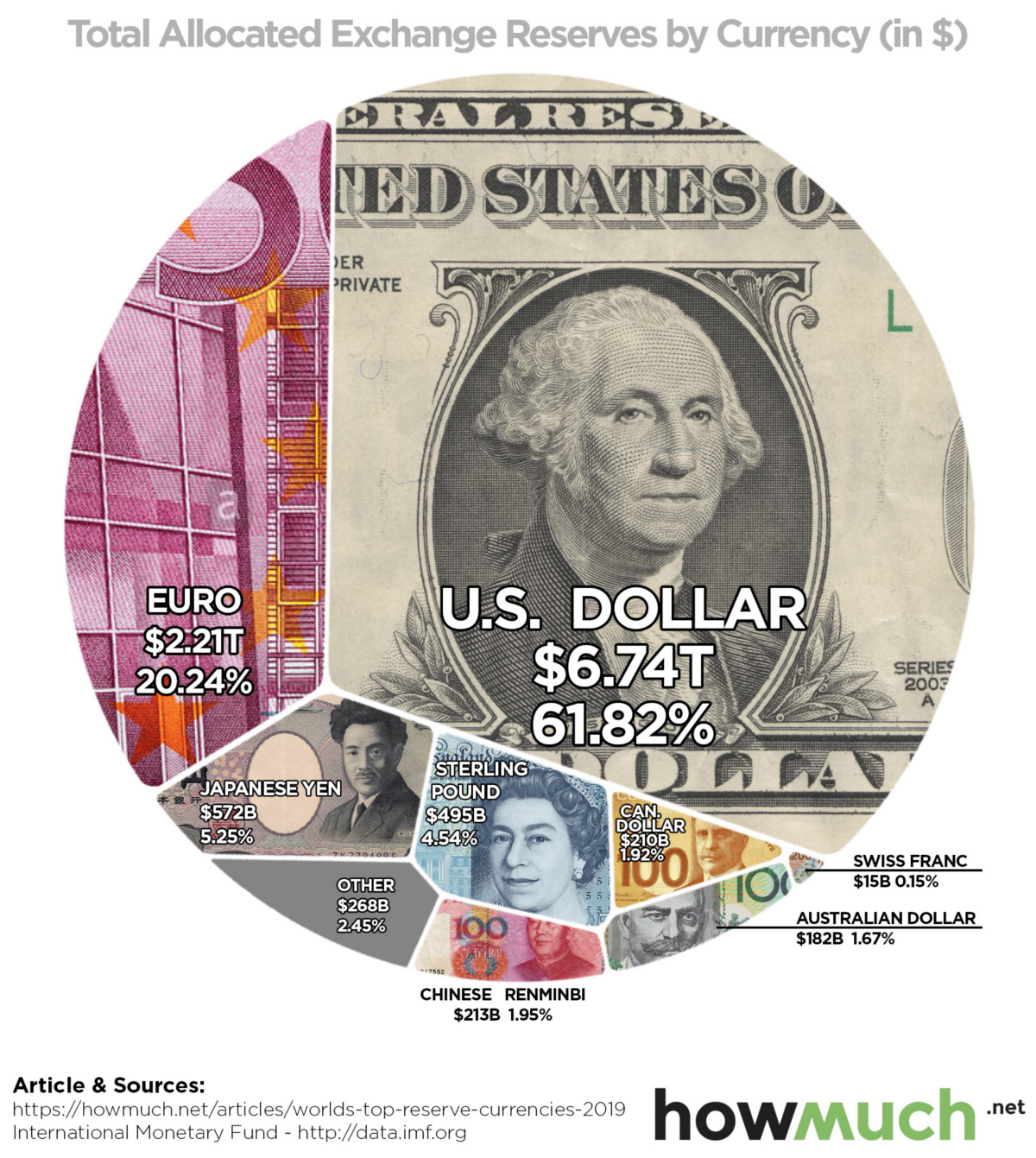When we think of network effects, we’re usually thinking of them in the context of technology and Metcalfe’s Law.
Metcalfe’s Law states that the more users that a network has, the more valuable it is to those users. It’s a powerful idea that is exploited by companies like LinkedIn, Airbnb, or Uber — all companies that provide a more beneficial service as their networks gain more nodes.
But network effects don’t apply just to technology and related fields.
In the financial sector, for example, stock exchanges grow in utility when they have more buyers, sellers, and volume. Likewise, in international finance, a currency can become increasingly entrenched when it’s accepted, used, and trusted all over the world.
What’s a Reserve Currency?
Today’s visualization comes to us from HowMuch.net, and it breaks down foreign reserves held by countries — but what is a reserve currency, anyways?
In essence, reserve currencies (i.e. U.S. dollar, pound sterling, euro, etc.) are held on to by central banks for the following major reasons:
- To maintain a stable exchange rate for the domestic currency
- To ensure liquidity in the case of an economic or political crisis
- To provide confidence to international buyers and foreign investors
- To fulfill international obligations, such as paying down debt
- To diversify central bank portfolios, reducing overall risk
Not surprisingly, central banks benefit the most from stockpiling widely-held reserve currencies such as the U.S. dollar or the euro.
Because these currencies are accepted almost everywhere, they provide third-parties with extra confidence and perceived liquidity. This is a network effect that snowballs from the growing use of a particular reserve currency over others.
Reserve Currencies Over Time
Here is how the usage of reserve currencies has evolved over the last 15 years:
 U.S. Dollar U.S. Dollar |
 Euro Euro |
 Japanese Yen Japanese Yen |
 Pound Sterling Pound Sterling |
? Other | |
| 2004 | 65.5% | 24.7% | 4.3% | 3.5% | 2.0% |
| 2009 | 62.1% | 27.7% | 2.9% | 4.3% | 3.0% |
| 2014 | 65.1% | 21.2% | 3.5% | 3.7% | 6.5% |
| 2019 | 61.8% | 20.2% | 5.3% | 4.5% | 8.2% |
Over this timeframe, there have been small ups and downs in most reserve currencies.
Today, the U.S. dollar is the world’s most powerful reserve currency, making up over 61% of foreign reserves. The dollar gets an extensive network effect from its use abroad, and this translates into several advantages for the multi-trillion dollar U.S. economy.
The euro, yen, and pound sterling are the other mainstay reserve currencies, adding up to roughly 30% of foreign reserves.
Finally, the most peculiar data series above is “Other”, which grew from 2.0% to 8.4% of worldwide foreign reserves over the last 15 years. This bucket includes the Canadian dollar, the Australian dollar, the Swiss franc, and the Chinese renminbi.
Accepted Everywhere?
There have been rumblings in the media for decades now about the rise of the Chinese renminbi as a potential new challenger on the reserve currency front.
While there are still big structural problems that will prevent this from happening as fast as some may expect, the currency is still on the rise internationally.
What will the composition of global foreign reserves look like in another 15 years?









